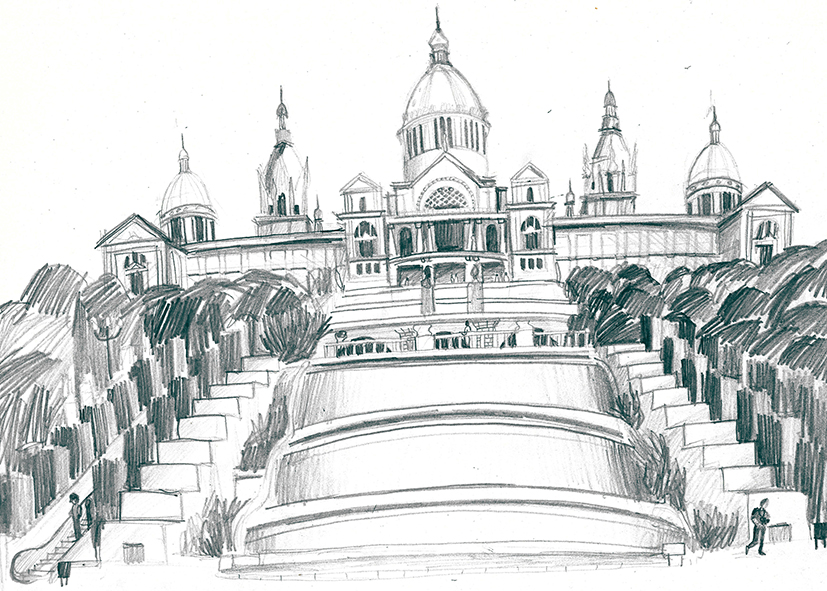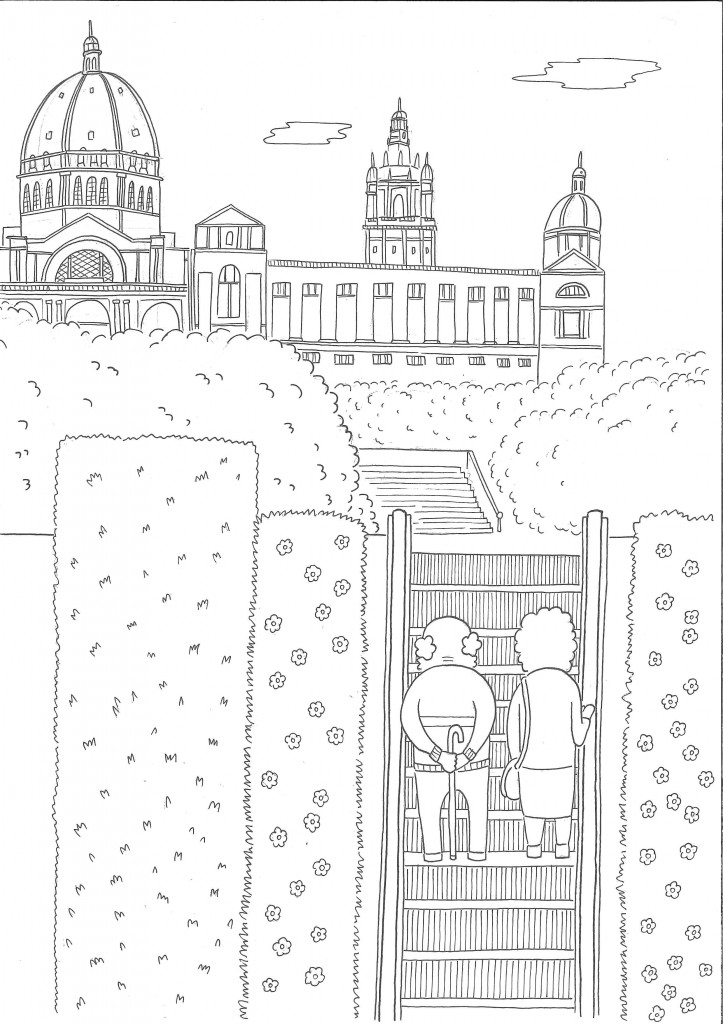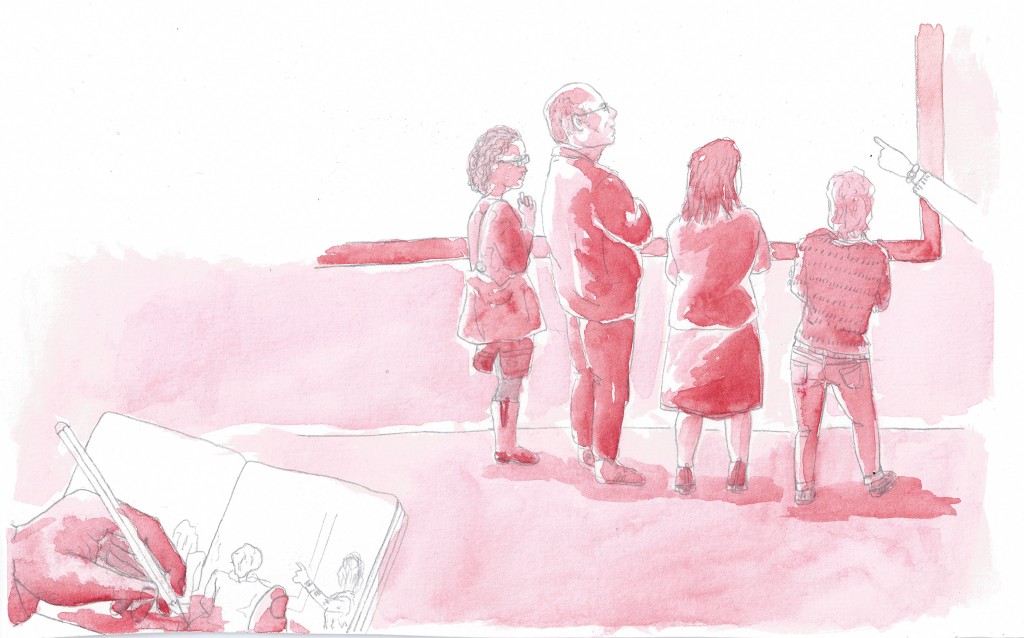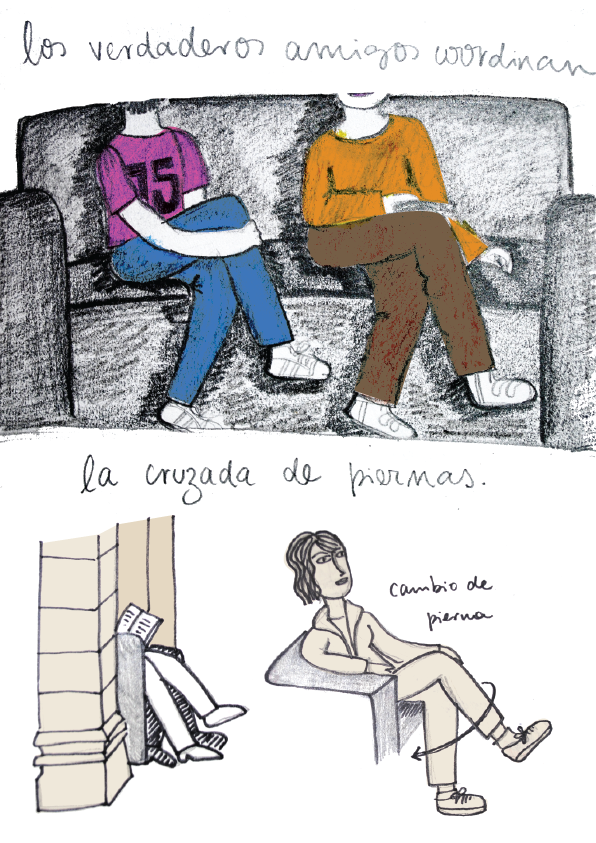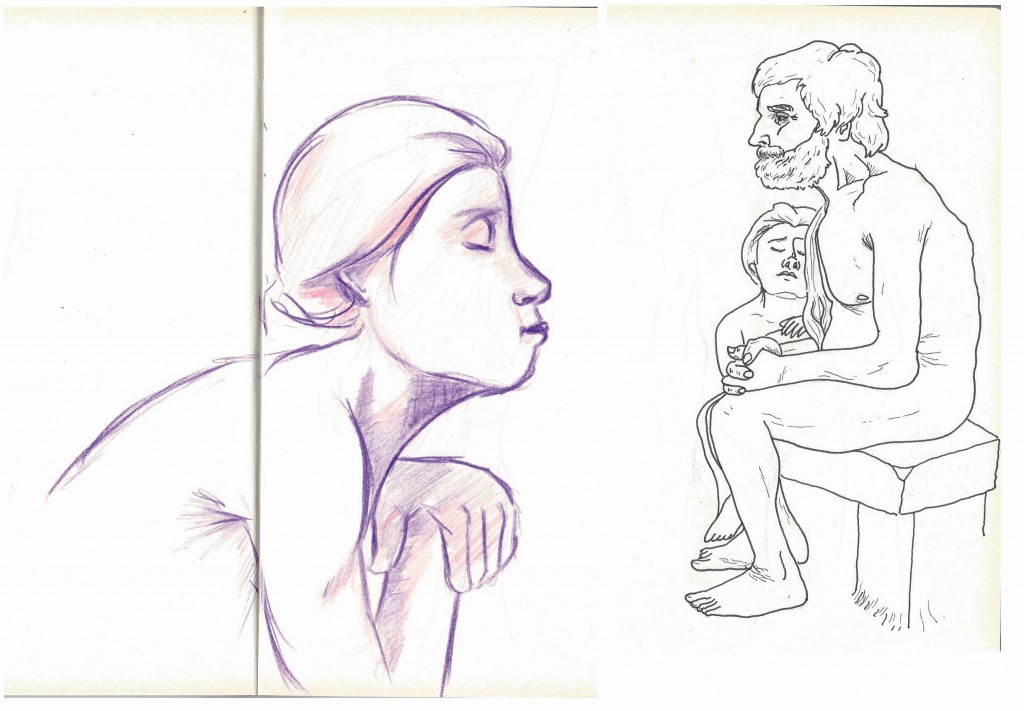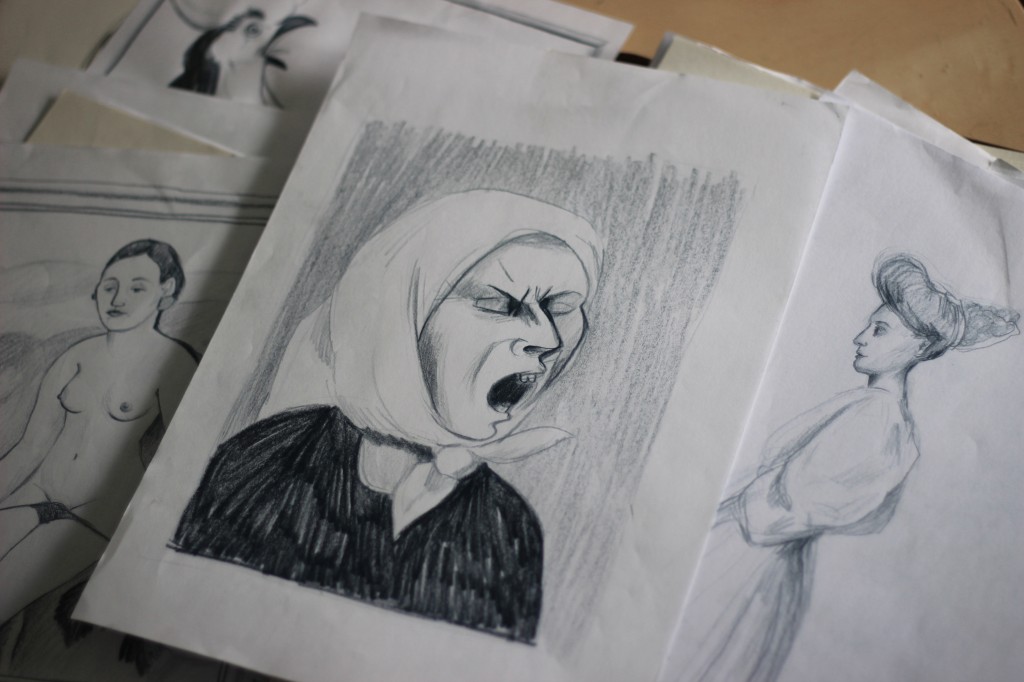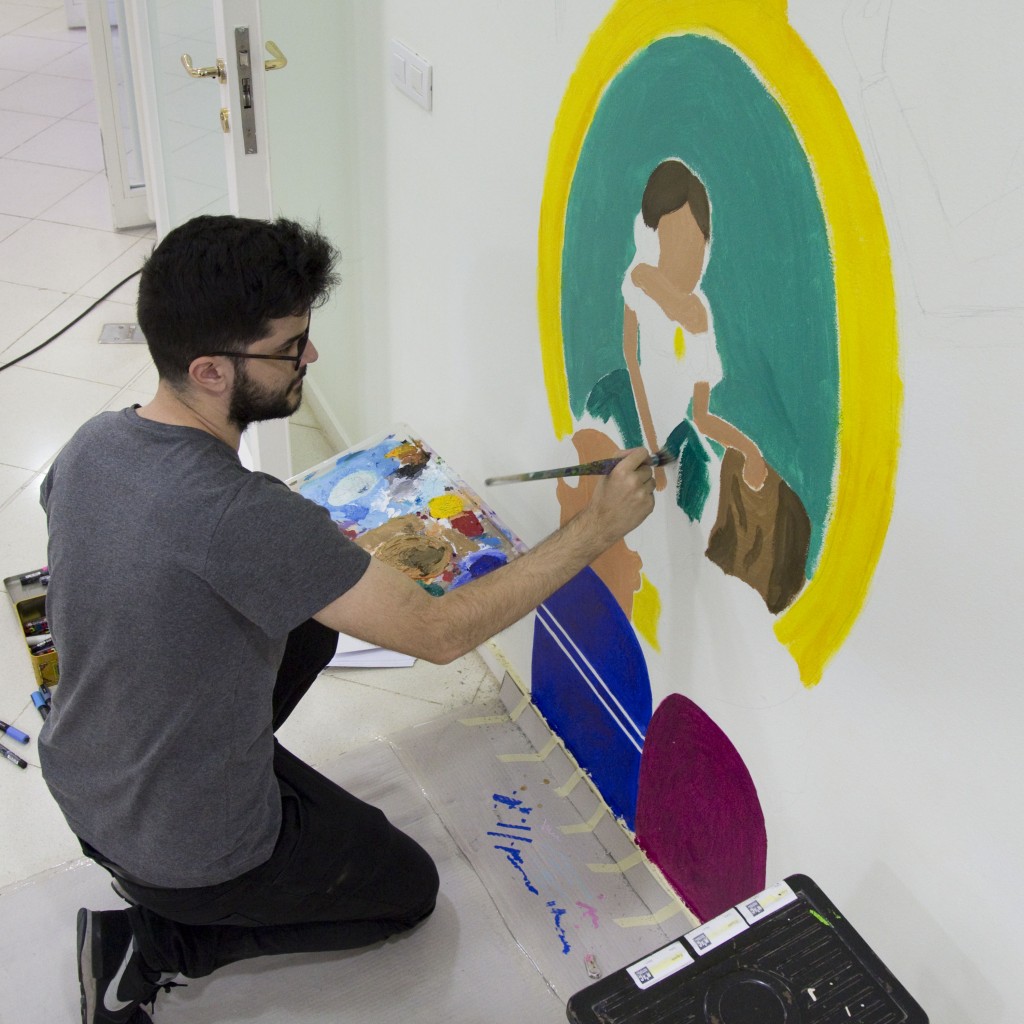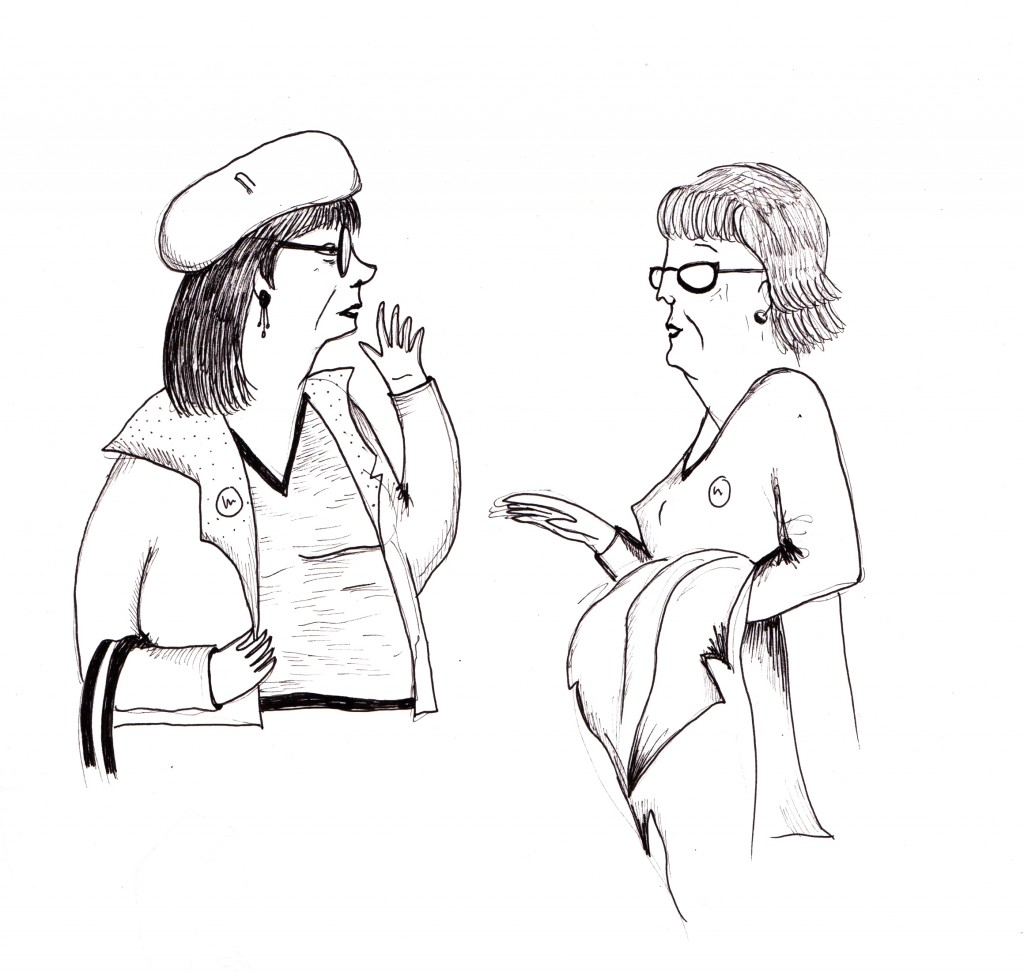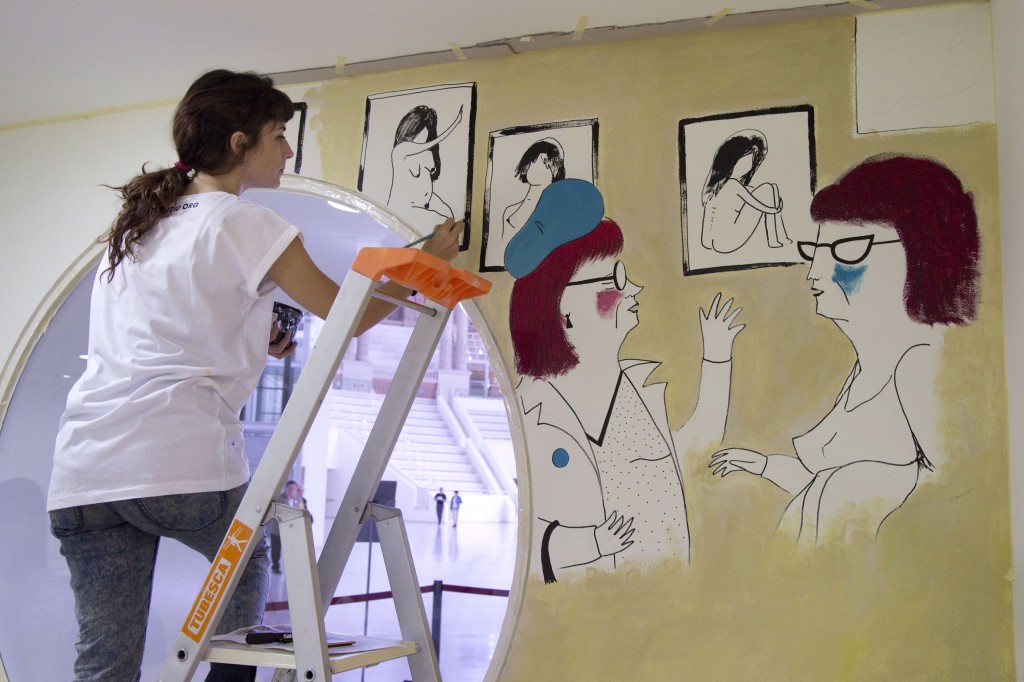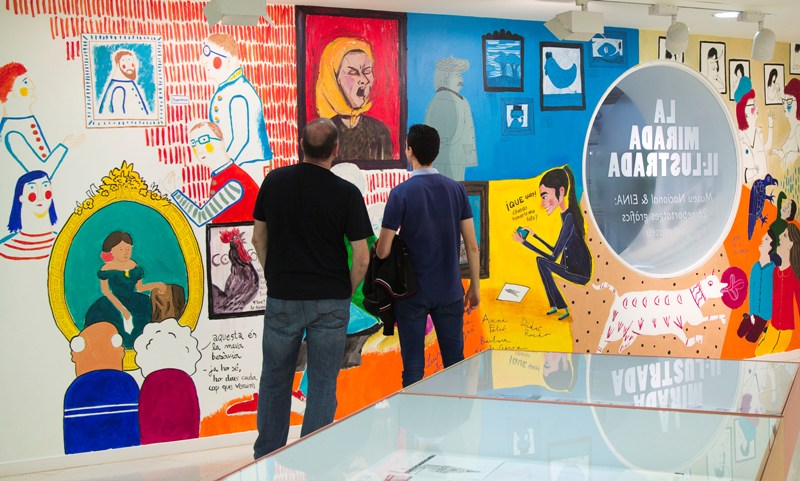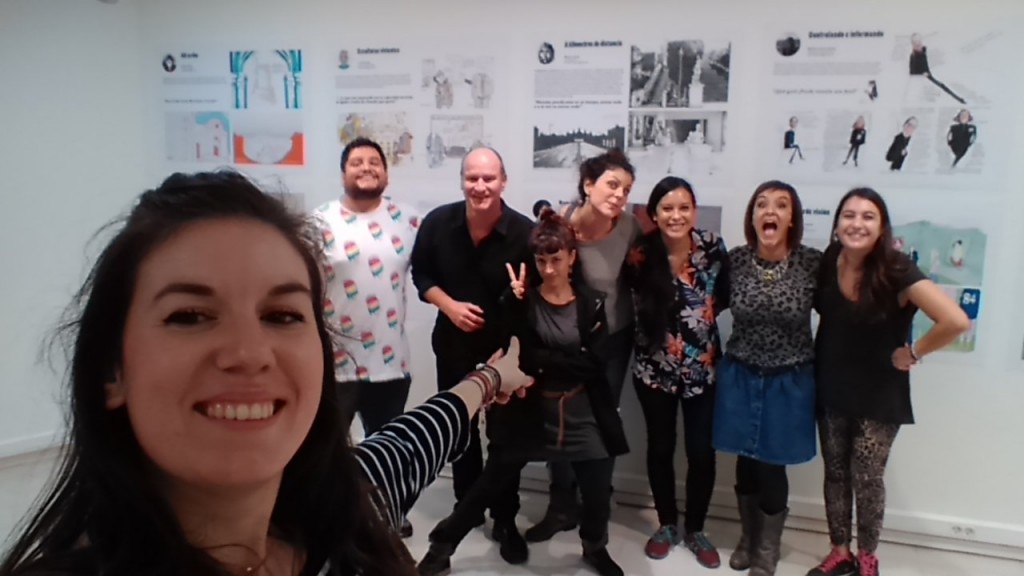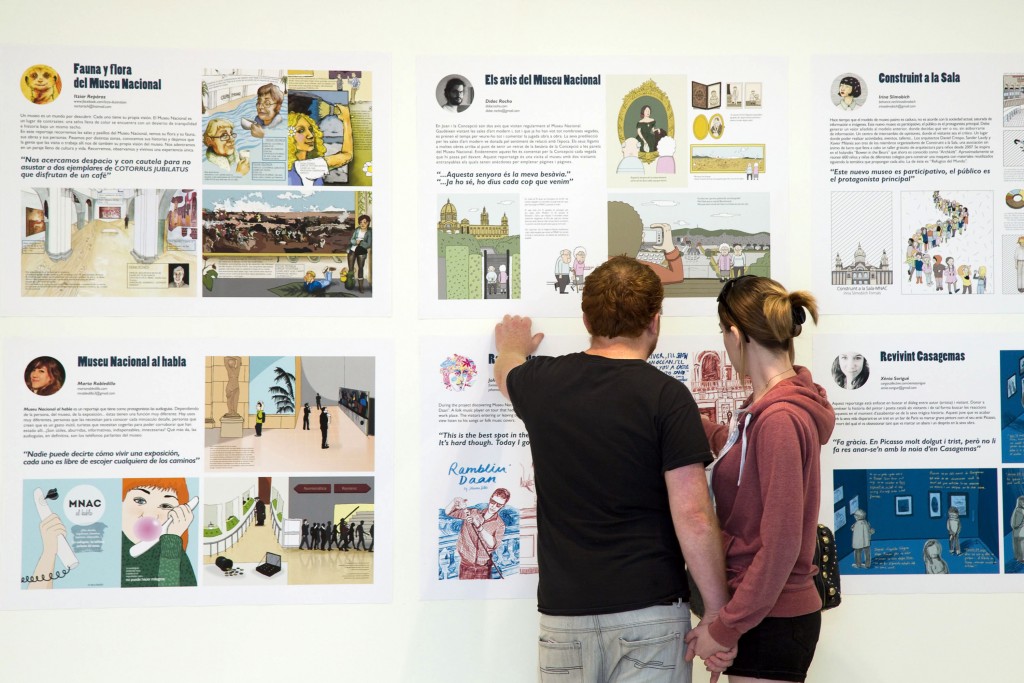Philip Stanton
26 young illustrators from EINA, Centre Universitari de Disseny i Art, were lucky enough to be able to really explore the Museu Nacional d’Art de Catalunya in October and November 2014. As a coordinator, teacher and creative collaborator I am proud to share with you the results of this experience.
How it all began
At the end of 1999, the directors of EINA gave me the task of designing, coordinating and being one of the teachers on the Postgraduate Diploma in Creative Illustration. In 2014 we were beginning the 15th year of the programme.
Some of the programme’s characteristics are:
- only 26 students are accepted per course (from over 100 candidates every year)
- prior presentation and acceptance of a portfolio;
- a direction focused on each student’s search for their own visual voice, and at the same time, a very professional approach.
The directors sought professional agreements and collaboration with businesses, publications and institutions so that the students could carry out real projects and/or enter prestigious competitions and awards.
At the end of 2014, thanks to the interest shown by Pepe Serra, director of the Museu Nacional, museum managers contacted EINA to explore the possibilities for collaboration between the two institutions. Oriol Pibernat and Blanca Fullana, the school’s directors of communications, respectively, thought that one of these forms of collaboration could be via the Post-graduate Diploma in Creative Illustration.
Every year, as part of the ‘Press Illustration’ course that I give as a teacher, we do a project for an Illustrated report, in which the students have to look for a general-interest journalistic story and tell it through images and texts in sequence. This year, 2014-15, we were able to unify the projects around a common leitmotiv: the Museu Nacional.
How we organized and experienced it at the Museu Nacional
In October 2014, we had a meeting with the students, director Pepe Serra and the museum’s public programmes department. There, the students were able to hear at first hand about the changes that have been introduced in recent years, the museum’s current approach, and to ask about the problems it is facing, the successes achieved and the goals still to be met.
During the last three months of 2014, the 26 students had free admission passes to the museum and they were able to draw in situ and interview members of the public and museum staff, with great freedom of movement. Many even went on a guided tour of the museum’s store rooms, an area off-limits to the general public.
Sometimes, students that enrol to study illustration begin the course with preconceived ideas and “tics” that lead them to imitate fashionable illustration models, copying trends instead of looking for their own visual voice. One of the important goals for teachers is to try and help the students to find and develop their own creative personality. It is not just a case of finding a unique style, but also their own ways of thinking about how to solve the problems that crop up during assignments.
Therefore, in our class sessions we also did exercises focused on drawing from direct observation, and on the search for visual and narrative concepts with the aim of helping them to find practical resources for successfully completing the task. At the same time, we looked at classic examples, plus other more contemporary ones, and we analysed illustrated reports by great authors / artists (Goya, Saul Steinberg, Robert Weaver, Titouan Lamazou and Cesc, among others), or even projects from previous years.
The main aim of the project was for the student to be able to tell a story as a visual journalist using images accompanied by text. It was important to pay attention to the structuring of the sequence of images and, as far as possible, to create the model of the project while making decisions about the typography, the composition and the page sequencing.
They presented the first proposals/versions in December 2014. These were analysed and discussed with me and the final versions were submitted in February 2015.
There were a great variety of approaches as regards the subjects chosen: humour, protest, didactic information or even poetry.
Themes as varied as:
- the museum staff
- the diversity and behaviour of the public
- the teaching programmes
- the architectural spaces
- the collection
- the museum environment
- swing dancing in the Oval Hall.
These concepts were expressed using different techniques that range from graphite, ink or paint to the most cutting-edge techniques of digital illustration.
The exhibition and the publication
Once the pieces had been submitted and the course had ended, I began working with the museum’s team to organize and mount the exhibition inside the museum in the educArt space, as well as its corresponding publication. Given that we wanted the exhibition to be rather more than a simple show of the work done, the idea came up of painting two collective murals with the help of eight students from the course, turning the development of the murals into a live creative happening.
So it was that on Thursday 29th October the student artists Anna Aparicio, Luis Bautista, Bárbara de la Garza, Laura Fernández, Daniella Ferretti, Federica Pavan, Didac Rocho and Xènia Sorigué (with the additional help of Angyla Alcala and Liana Perez), working from ten in the morning to eight at night, painted the magnificent murals inside and outside the exhibition space. Very special mention must be made of the contribution of Daniella Ferretti, a scholarship holder on last year’s course, who very ably coordinated the team of artists.
As to the publication and the exhibition material, at EINA and my own studio we got down to work to coordinate, compile the material, and design the necessary materials. With the content texts especially, we were hugely fortunate to be able to work with the Museu Nacional’s communications team. Without their intense and generous collaboration, both the exhibition and the associated publication would have been of notably inferior quality. Their creativity, thoroughness and good humour under pressure made a stressful job a source of enjoyment.
Lastly, I must mention the exhibition assembly team, which was a mixture of the museum’s team and a large group of volunteers, students on last year’s course (many of the same students who worked on the murals, but others too, like Gisela Navarro or Flavia Nicoletti). Perhaps even more remarkable was the disinterested help of the students from this year’s course: Anna Baquero, Hugo Cardenas, Rita Fittipaldi, Simona Galizia, Florencia Merlo, Jansel Rubiano, Ester Perabá and Liana Pérez. To all of them my sincerest thanks.
The students on this course came from Argentina, Bolivia, Brazil, Chile, Italy, Mexico, Sweden, and from different places in Spain: Andalusia, Valladolid, Catalonia and the Basque Country. Their reports constitute an illustrated gaze, behind the scenes, created with personal approaches but seeking transverse communication. Through these drawn micro-documentaries, the richness and special nature of the Museu Nacional is presented to a broader public.
Related links
The illustrated look. Museu Nacional and EINA: 26 graphic reports of the museum
Digital Catalog (pdf 4,75 Mb)
Philip Stanton, visual artist. Coordinator and professor of the Postgraduate Program of Creative Illustration in EINA.


